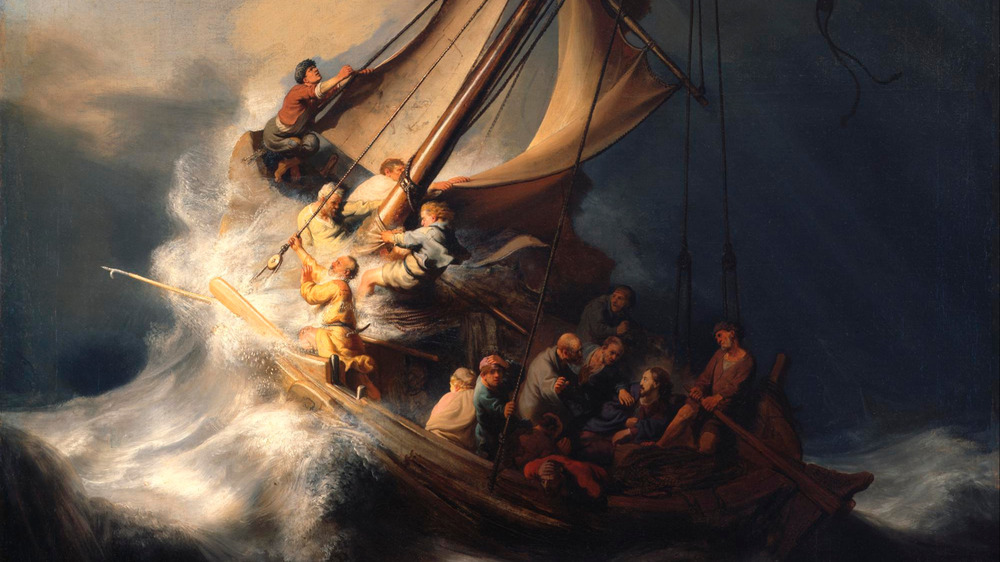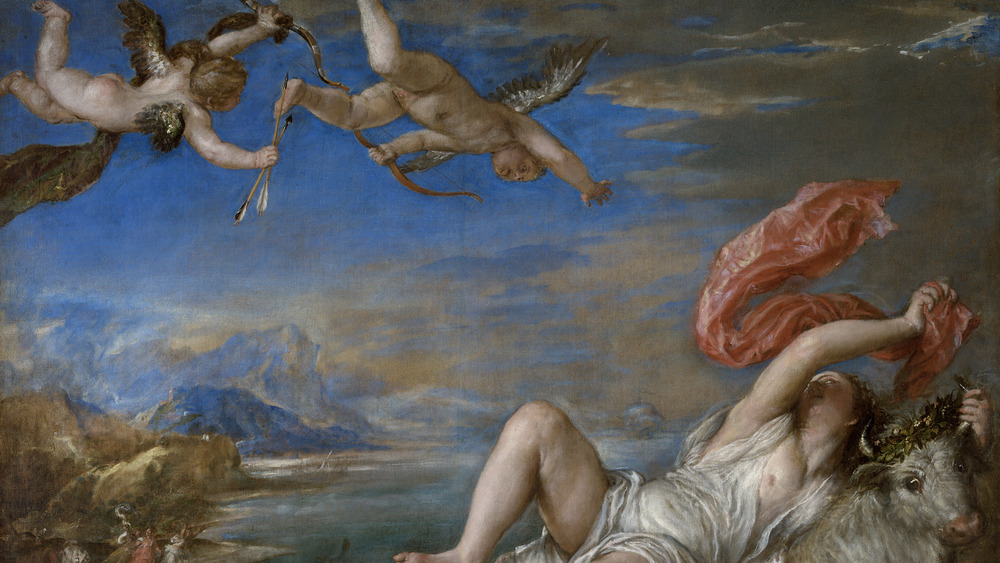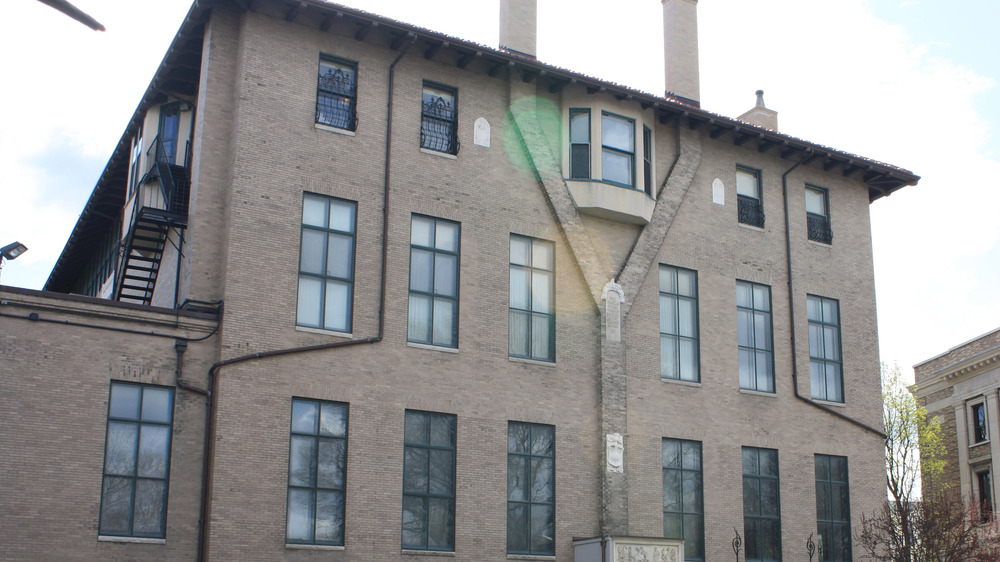This Is How Much The Stolen Art From Isabella Stewart Gardner Museum Was Worth
In the early morning hours of March 18, 1990, two men in police uniforms burst into the Isabella Stewart Gardner Museum in Boston to handle a disturbance call. "There they stood, two of Boston's finest waving at me through the glass. Hats, coats, badges, they looked like cops," one of the guards later wrote (via the Boston Globe). "I buzzed them into the museum." The problem was that there was no disturbance call, and the guards on duty had unwittingly just let two thieves in the building. Before the guards could take any action, the thieves promptly tied them up and looted the art collection over the next hour. By the time it was over, the robbers had committed the most expensive art heist in history, with works by Degas, Rembrandt, Manet, and Vermeer in the mix.
In all, 13 works of art (viewable at the Gardner Museum website) were stolen. At the time of the heist, the FBI estimated the value of the haul at $200 million, but raised this estimate to $500 million by 2000. However, some experts say that figure is far too low, according to Widewalls, and say the missing pieces should be valued closer to $1 billion. It was considered to be the largest museum heist until the Dresden Green Vault burglary in 2019.
The stolen works revealed something about the thieves
One painting accounted for approximately half of the heist's value, at $250 million. That would be the "The Concert," by Dutch painter Vermeer (1632-75), which some experts believe is the most valuable stolen item in the world. In the same room, the thieves took Rembrandt's "The Storm on the Sea of Galilee," the artist's only known seascape, with an estimated value of $100 million, per the Gardner Museum.
Although the thieves managed to pick up a couple of pieces that exceeded heist records in terms of value, their other choices of what to steal were puzzling, to say the least. That included a 10-inch bronze gu — an ancient Chinese beaker for serving wine, from the Shang Dynasty — that was valued at just thousands of dollars. Five sketches by French artist Edgar Degas were worth less than $100,000 in total. Meanwhile, the thieves passed up highly valuable works by Michelangelo, Botticelli, and Raphael that were in the rooms they looted. They also skipped an entire floor where Titian's "The Rape of Europa" — one of Boston's most valuable paintings — was housed.
Investigators quickly realized that the thieves' selections and the way they crudely handled the art suggested that they were likely not commissioned to steal particular works, nor were they skilled in stealing art, according to the Boston Globe.
A massive reward was offered, but the Gardner Museum's art is still missing
The Gardner is an independent museum (pictured above) with no insurance on the valuables of the collection. Sotheby's and Christie's auction houses offered a reward of $1 million for information leading to the return of the pieces. The amount has increased over the years, all the way to $10 million in 2017, per The New York Times, making it the largest reward ever offered by a private institution for stolen artwork. Federal prosecutors said they will not prosecute anyone who returns the items, and the statute of limitations has since passed.
Although there have been some decent leads over the years and a few revelatory theories put forward, investigators have never been able to arrest either thief, or find any of the missing works. The FBI claimed their agents finally figured out who the thieves were, but did not name names, per the Guardian, saying the two were no longer alive.
For now, per the instructions from the woman for whom the museum is named — philanthropist and art patron Isabella Stewart Gardner, who died in 1924 — the art is on permanent display exactly as she left it. Empty frames stand as placeholders for the stolen art, awaiting its return.
On April 7, Netflix will begin streaming a four-part docuseries on the theft, titled This Is a Robbery: The World's Biggest Art Heist.


